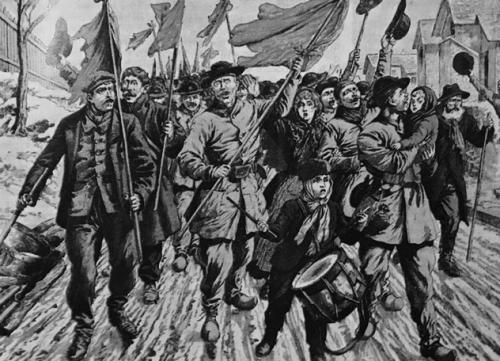How to fight a class struggle
- Opinión

Class struggles are eternal, but how they are fought depends on the ongoing state of the world-system in which they are located.
World-systems have three temporalities. They come into existence and this needs to be explained. Secondly, they are stabilized structures and operate according to the rules on which they are founded. And thirdly, the rules by which they maintain their relative stability cease to work effectively and they enter a structural crisis.
We have been living in the modern world-system, which is a capitalist world-system. We are presently in the third stage of its existence, which is that of structural crisis.
During the previous phase, that of stabilized structures or normality, there was a grand debate within the left about how one could achieve the objective of destroying capitalism as a system. This debate occurred both within movements created by the working class or proletariat (such as trade-unions or social-democratic parties) and within nationalist parties or national-liberation movements.
Each side of this grand debate believed that its strategy and its alone could succeed. In fact, while each side created zones in which it seemed to succeed, neither did. The most dramatic examples of presumed success stories that turned out to be unable to avoid the pull to a return to normality was the collapse of the Soviet Union on the one hand and the collapse of the Maoist cultural revolution on the other.
The turning point was the world-revolution of 1968, which was marked by three features: It was a world-revolution in that analogous events occurred throughout the world-system. They all rejected both the state-oriented strategy and the transformative cultural strategy. It was a matter they said that was not either/or but rather both/and.
Finally, the world-revolution of 1968 also failed. It did however bring to an end the hegemony of centrist liberalism and its power to tame both the left and the right, which were liberated to return to the struggle as independent actors.
At first, the resurrected right seemed to prevail. It instituted the Washington Consensus and launched the slogan of TINA (or there is no alternative). But income and social inequality became so extreme that the left rebounded and constrained the ability of the United States to maintain or restore its dominance.
The return of the left to a premier role also came to a swift end. And thus began a process of wild swings, a defining feature of a structural crisis. In a structural crisis, the left needs to pursue a policy of seeking in the very short run both state power in order to minimize the pain for the lower 99 percent of the population AND in the middle run to pursue a cultural transformation of everyone.
These seemingly contradictory pursuits are very disconcerting. They are however the only way to pursue the class struggle in the remaining years of the structural crisis. If we can do it, we can win. If not, we shall lose.
- Immanuel Wallerstein, Senior Research Scholar at Yale University, is the author of The Decline of American Power: The U.S. in a Chaotic World (New Press).
Copyright ©2019 Immanuel Wallerstein — used by permission of Agence Global.
Del mismo autor
- Retirer les troupes ? Les choix impossibles 09/05/2019
- A luta de classes em tempos de crise estrutural 22/02/2019
- How to fight a class struggle 19/02/2019
- The Big Five: Clinging to power 04/02/2019
- Withdrawing troops: The impossible choices 21/01/2019
- The Desperate mr. trump, or Trump says he matters 07/01/2019
- The November 6th U.S. elections: catastrophe or salvation? 05/11/2018
- Human rights, anyone? 19/10/2018
- Les paris risqués de Trump dans l’arène mondiale 20/09/2018
- Trump’s risky bets in the world arena 20/09/2018
Debate izquierdas
- Umberto Mazzei 06/09/2021
- Umberto Mazzei 06/09/2021
- Sergio Rodríguez Gelfenstein 17/06/2021
- Andrés Kogan Valderrama 17/06/2021
- María José Olguín 11/05/2021
